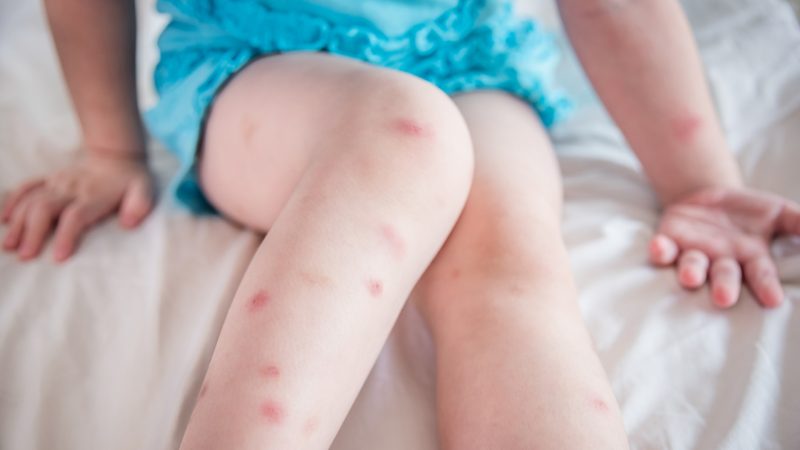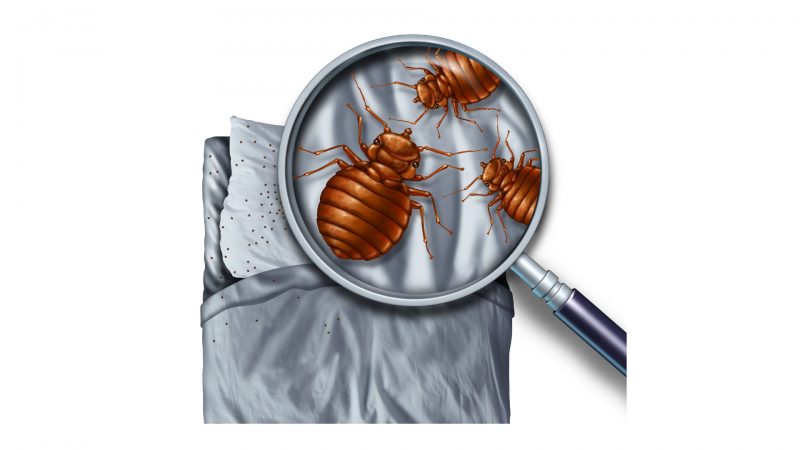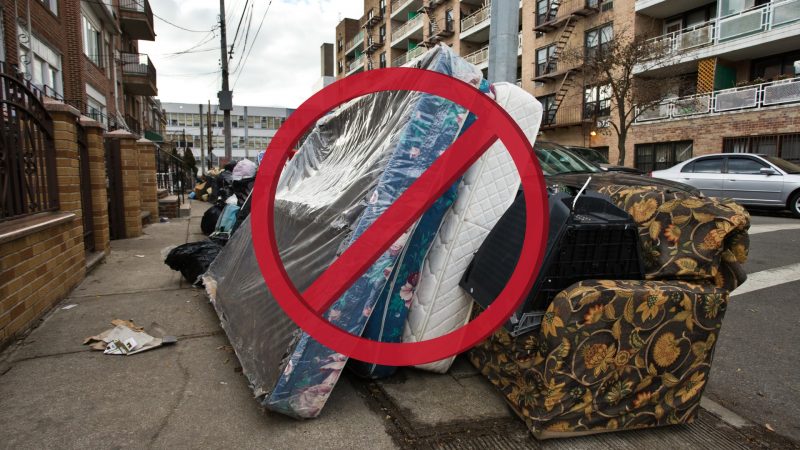Bed bugs are a very common problem but there are many ways to get rid of them so do not worry, you are at the right place.
Bed bugs love mattresses. They are small and usually few so is difficult to see them with the naked eye. If you can easily find them and see them as they crawl under or inside the mattress then infestation is already alarming.
Bed bugs will often infest buses, airplanes, and trains. Consequently, will spread to your clothes and luggage. This is one of the most common ways of bringing them to your home.
Clean House Means Nothing to Bed Bugs!

Don’t fall into that trap of thinking that clean house means that you won’t have any bed bugs. Nah, that’s not true. Bed bugs don’t care if your house is shiny and clean or dirty and stinky.
They can and they WILL infest your mattresses even though you just picked it up from the nearest deep cleaning store.
Some of you will immediately change the mattress but if buying a new mattress seems like an expensive solution there are some alternatives.
Why Have Bed Bugs Infested Your Mattress?

Bed bugs are small, oval, and brown insects that feed on human blood or the blood of your pets. Adult bed bugs will have a flat body, which can be compared to the size of the apple seed. When they’re fed enough, their bodies become swollen and resemble a red color, due to all the blood they’ve drunk.
Thankfully, bed bugs don’t fly but they’re very fast and can move swiftly over walls, floors, and ceilings. In their modest lifetime, females lay hundreds of eggs which then produce a few hundred of bed bugs.
Now, imagine every female bed bug that’s part of the infestation doing that. In a short period, you get thousands of bed bugs infesting your bed, your sofa, your carpet, etc. Although this sounds gross, experts say that they don’t transmit diseases, so this condition isn’t life-threatening.
How Did Bed Bugs Infest Your Mattress?

Bed bugs can enter your home through luggage, old beds, and couches or simply through clothing. The worst thing is that they don’t stop at mattresses but continue to voyage through the house.
Thanks to their flattened bodies, they can easily fit into tiny spaces, even those places that seem impossible to fit. Contrary to bees or ants, bed bugs don’t have nests. Their “nests” are, simply put, hiding spaces or groups.
Over time, bed bugs will spread to any place they find suitable. It can either be another room in your house or in the case of a building, it can be another apartment.
Bed bugs feed exclusively on blood, which implies that they are NOT a sign of dirtiness (unsanitary conditions) in your home. You can find bed bugs in clean and tidy places but also in some low-end hotels and apartments.
When Do Bed Bugs Bite?

Bed bugs are nocturnal insects and are most active at night. That’s when you’ll get numerous bites from bed bugs and when you wake up in the morning, your skin will feel itchy.
Bed bugs drink blood in almost the same way as mosquitos – by piercing the skin and drinking the blood via an elongated beak. They will drink blood anywhere from 3 to 10 minutes and when they become swollen and leave unnoticed.
In the beginning, these bites will be painless. But, after numerous bites, you can notice red, itchy welts. Comparing it to mosquito bites, these bites are somewhat less severe in their looks. For example, mosquitos love biting near your ankles, while bed bugs don’t have a particular place where they bite.
While mosquitoes bite itches more, in the end, there isn’t a big difference, as you won’t get bitten by a single bed bug. In most cases, dozens of bed bugs will feed on your skin.
If you see numerous red welts on your skin, that’s a sign of bed bugs. Sometimes, it may be mosquitos so if unsure check your mattress to confirm.
Main Signs of Bed Bugs Infestation in Mattress
One pretty common sign is that you get itchy and red skin in the morning. Other tangible and visible signs include:
- Bloodstains on your pillow or sheets
- Dark spots on your mattress, bedclothes, walls, and sheets (bed bug excrement)
- Visible fecal spots and eggshells on spots where bed bugs hide
- A strong, musty odor emitted from the scent glands
If you suspect that there’s an infestation, first, you’ll need to remove all bedding and check if there are any signs.
If not, remove the dust cover from the box springs and check for signs in the wood framing. Finally, you’ll need to peel the fabric of the wood frame, as they can hide under this fabric.
Sometimes, bed bugs won’t hide directly in your mattress but around the bed, so you’ll need to check that area as well. This includes the carpet near your bed, books, radios, and in severe cases, electrical outlets. Since bed bugs can be attracted to clothing, you should also check your closets.
If you can’t find any signs and you’re still suspecting, then it’s time to call an exterminator.
Can Bed Bugs Live in Different Types of Mattresses?

In this section, we’ll take a look at four different types of mattresses and see if bed bugs can infest some of them.
Can Bed Bugs Live in Foam Mattresses?
One of the most common misconceptions is that foam mattresses can’t be infested with bed bugs. Unfortunately, this isn’t true. The memory foam is lightweight and there’s nothing preventing bed bugs from getting there.
The problem with bed bugs is that they have difficulty walking on the surface of a regular mattress. Given their shape, it’s very difficult for them to walk through their hair. Bed bugs don’t have claws so they can’t grip onto things and on top of that, they’re very wide, meaning that they move harder.
When it comes to foam mattresses, these problems do not exist. Walking is easy as there’s no hair and the only difference is that the foam mattress has been treated with a pesticide by the manufacturer.
- Can Bed Bugs Burrow into the Foam of the Mattress?
Bed bugs can’t burrow into the foam mattress because they don’t have claws.
They always live on the surface of the mattress and if found inside it’s because they found a crack. Bed bugs have a small scratcher, which is used to make a tiny hole in the skin but it is not strong enough to burrow into a mattress.
Can Bed Bugs Live on Air Mattresses?
Air mattresses are very expensive and very comfortable but they aren’t bug-resistant. Air mattress consists of air inside it and outside material.
Bed bugs can only crawl on the air mattress but not survive there, meaning that you won’t be lying on a pile of bed bugs every night.
The great thing about this is that the bed bugs are visible on your air mattress and can be removed pretty easily. Even a vacuum cleaner will do the job here, as air mattresses’ material isn’t the most bug-friendly.
This doesn’t mean that you can’t get bed bugs in your home. Since they can’t hide in the air mattress, bed bugs will find another place to hide, which is also a cause for an alarm.
Can Bed Bugs Live on Plastic/Vinyl Mattresses?
Mattresses protected with plastic or vinyl are perhaps the best way to protect yourself from bed bugs.
This is the first line of defense against these pests. The reason for this is that bed bugs have a hard time navigating through the vinyl of plastic, which results in their death.
Be sure to purchase the vinyl cover from a respectable company. If you manage to buy a quality cover, it will be comfortable, and soft, and on top of that, it will also be beautiful. It can make your bed or mattress more beautiful and it serves as excellent protection.
Can Bed Bugs Live in New Mattresses?
A new mattress can get infested with bed bugs easily. There is nothing that will prevent your old bed bugs from attacking the new mattress, regardless of its type.
Every type of mattress can be attacked by bed bugs but it’s hardest to locate them if you have an ordinary mattress. Some types of mattresses will repel this attack better, such as air and mattresses with plastic/vinyl covers. The main thing is that even your brand-new mattress, just bought in the store, can get infested!
Can Bed Bugs Eggs Live in Mattresses?
Bed bugs love hiding their eggs in seams, edges, and harborages of your mattress. Inside the mattress, their eggs can survive and produce more bed bugs over time. This is why it’s essential to kill the bugs both on the inside and on the outside of your mattress.
If I Have Bed Bugs, Do I Have to Throw Away My Mattress?

When people see that they have bed bugs in their mattresses, they immediately think about throwing them away. While this solution seems the most rational, there are some downsides to it.
When you buy a new bed or mattress and bring it to your home, guess what will happen – the bed bugs that now enjoy the comfort of your home will have a new place to live! Then, you’ll throw away this mattress and buy a new one. This becomes an obnoxious, pointless, and cost-inducing vicious cycle that many people fall into.
This begs the question – is every mattress you buy so low-quality that bed bugs will infest it? The answer is negative. It’s not about the mattress you buy.
You can buy the most expensive mattress in the store and still get bed bugs. It’s about your HOME. If you’ve read our article carefully, you’ve probably seen this coming. We’ll now cover if discarding your mattress is an effective solution.
Throwing Away Your Mattress
There are some benefits to throwing away your mattress. Bed bugs are mainly associated with every place containing fabric. Whether it’s your blanket, mattress, or piece of clothing, bed bugs will enjoy every bit of it. In most situations, discarding your mattress and bed as a whole will resolve a large percentage of the problem.
This makes the most sense if your mattress is severely infested, isn’t usable, and on top of that, needs replacement because it is old. In that case, it’s perfectly fine to throw it away from your home.
But, this begs a new question. HOW should you get rid of your mattress so that you don’t create a bigger problem? Think about what will happen to a discarded mattress. Will it stand there and collect dust for 5, 10, or 15 days in your dumpster? How long will it stay outside before someone comes and collects it?
Bed bugs might not necessarily return to your home but they may become someone else’s problem. It is best to tailor this operation to the trash collectors and their schedules.
If you need to carry the mattress through several rooms in your house, bed bugs can be dispersed and you just spoiled a large percentage of the effort you’ve put in. So, before you do that, use your vacuum cleaner to remove the visible bugs but once again, you won’t be able to remove them all. Make sure to clean your vacuum cleaner afterward!
To minimize risk, you can wrap the mattress in shrinkwrap or plastic before carrying it around.
Pesticide Treatment
Some people want to keep their mattresses and they will resolve to the most obvious solution – a pesticide treatment. But, here’s the catch. Very few products are intended for such use. This means that you should NEVER use a pesticide that isn’t specifically labeled and intended for a particular use. Follow the product’s label consistently and see what it’s best used for if you’re not sure.
Once again, very few pesticides are allowed because there’s a great risk of endangering your health. We will talk more about this in the section below. If you love your current mattress you don’t have to throw it away because it can be saved from bed bugs.
How to Get Rid of Bed Bugs in Mattresses?
Some methods include using heat treatment, some pesticides or mattress encasements. However, this topic is discussed thoroughly in our second article about mattresses and bed bugs – How to Get Rid of Bed Bugs in a Mattress – Easy Instructions
In that article, we went in-depth and gave you the most efficient ways to get rid of bed bugs. We strongly recommend that you read that article after you finish this one. These two articles will give you all the necessary knowledge to fight bed bugs in mattresses successfully.
How to Prevent Bed Bugs from Getting into Mattresses?
One of the cheapest and simplest ways to protect the mattress is to use vinyl/plastic covers and mattress encasements. This way, you will gain full protection from bed bugs as these materials aren’t friendly to bed bugs.
Find the quality covers and encasements for your mattress and be sure to zip them correctly. Not zipping them correctly will still leave some space for bed bugs to enter, making these solutions impractical. If you want to save some cash and give your mattresses 180-degree protection, this is the way to go.
To put things into perspective, bed bugs are pretty terrifying creatures but they’re not immortal. You can easily prevent them from getting into your mattress and if you fail at that, the methods we gave you are more than effective.
List of Sources
Frishman A. 2000. Bed Bug basics and control measures. Pest Control 68: 24.
[USDA] U.S. Department of Agriculture. 1976. How to Control Bed Bugs. USDA. Washington D.C.
- How to Get Rid of Copperheads | Practical Guide - August 27, 2023
- How to Get Rid of Corn Snakes | What Makes Them Aggressive? - August 27, 2023
- How to Get Rid of Alligators | Safety Measures and Removal Methods - July 16, 2023
